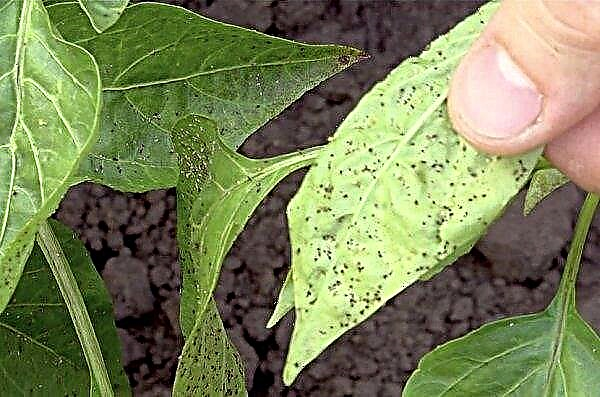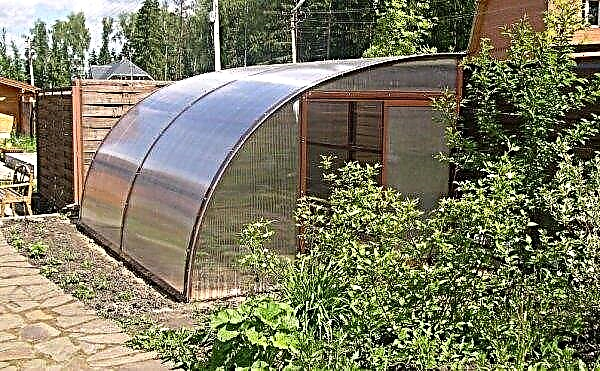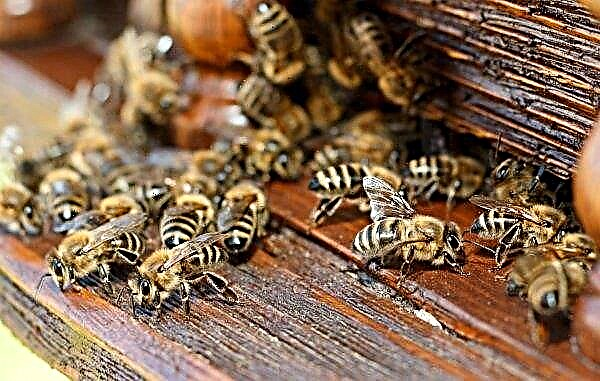Ficus Benjamin is a popular species among indoor plants. One of its most effective varieties is Starlight. This plant looks very decorative due to the white spots on the foliage, which make it look like a plant strewn with snow. We learn what Benjamin Starlight's ficus is, how to properly care for it, whether it is necessary to transplant after purchase, what benefit or harm it can bring.
Botanical description of the plant
Ficus Benjamin Starlight is a variegated form. He has white spots scattered throughout the sheet. Sometimes there are completely white-painted plates. The leaves are small, about 5 cm long, lanceolate, with solid edges. Like all ficuses, Starlight is an unpretentious evergreen native to the Asian tropics.
Video: Ficus Benjamin Starlight
Unlike many other representatives of the genus of ficus of the mulberry family, this species does not grow rapidly - it grows annually by only 5–10 cm. In the natural environment, it can grow up to 5 m in height and is considered a long-liver. In room conditions, its growth is limited by capacity, lives for more than a dozen years. At a young age, he looks like a bush. It has flexible drooping branches, lends itself well to forming.
Benefit and harm
- A houseplant such as Benjamin Starlight's ficus may be useful as follows:
- purifies air of harmful impurities of formaldehyde, phenol and benzene, saturates it with oxygen;
- serves as an excellent interior decoration;
- observing a beautiful plant helps calm and relax.
- This plant may cause the following harm:
- may be toxic to young children and animals, so it should be kept away from them;
- contact milk can cause allergies, it is especially dangerous for asthmatics.
Adaptation and transplantation after purchase
Freshly bought ficus is not immediately transplanted. The plant is given 2-3 weeks to adapt to the new environment. It is immediately put on a permanent place, since the ficus does not like extra permutations. At first, there should not be any other plants nearby, because a beginner will need quarantine. After all, not all diseases are immediately noticeable when buying, and a diseased plant can infect others.
The new plant is not watered for the first few days. Watering is done only if the land is dry. During the adaptation period, take a look at the ficus - are there any signs of illness or pests, is the soil drying out too quickly. If there are no complaints about the soil and the size of the pot, then the transplant should be postponed until optimal for this time (early spring or autumn).Did you know? Ficuses, which have juicy dense leaves, are used in folk medicine. They make funds that help with some female diseases, as well as rubbing with radiculitis, osteochondrosis and arthritis.
If the soil dries out too quickly, the roots stick out from the drainage hole or the plant signals the root rot, then the transplant should not be delayed and only a few days should be allowed to adapt. In addition, a temporary substrate is often used during transportation, in which the plant will not be able to live long.
When transplanting, it is best to use ready-made soil from the store for ficus or palm trees. The pot must be selected a couple of centimeters larger than the previous one and put on the bottom a drainage layer of pebbles, expanded clay or broken brick. The plant is watered before planting and after a while carefully removed from the old pot. The roots are carefully freed from the old substrate and carefully inspected. Rotten or dead roots are removed.
Part of the soil is poured into the pot and try on ficus. If necessary, add more soil or, conversely, remove the excess. Then in the middle they put up a ficus and gently fill it with the remaining soil. If there were rotten roots, then after transplanting, the soil is watered with the carbendazim fungicide.
Young plants are recommended to be replanted annually, and older ones - every 3 years. If the plant is large and already takes up too much capacity, then you can simply replace the topsoil annually with a more fertile one.
Important! Ficus Starlight should be carefully examined even with the purchase. The soil should not be too wet and have a bad smell - in this case, it is better to refuse to buy such a plant.
Necessary microclimate and future care
Ficuses are not very troublesome plants, but in the absence of proper conditions and care, they can die.
Seat selection
Ficus Starlight is photophilous, so its location should be well lit. Variegated forms always require a large amount of light. In this case, the lighting should be scattered, without direct sunlight - they can cause burns on the leaves. In winter, it is desirable to highlight the plant. There should be no drafts in the habitat of this ficus. The pot with it should not be turned or moved from place to place. The plant does not like change and can discard foliage.
Content temperature
The optimum temperature regime in summer should be + 25 ... + 30 ° С, and in winter - + 16 ... + 20 ° С. It is possible to lower the air temperature to + 10 ° C. It should be noted that the lower the temperature, the less you need to moisten the plant. Drafts and sharp temperature drops should not be allowed.
Air humidity
Ficuses love moist air, so you need to carry out daily spraying with a spray bottle of boiled water. It is especially important to spray the plant in the summer heat and in the cold period, when the heating system appliances begin to dry the air in the room.
Important! Dry air in the cold can cause foliage to drop. Strong soil waterlogging and root rot can also lead to this phenomenon.
Watering
Humidify the earth is necessary in moderation. Excess or lack of moisture can adversely affect the condition of the plant. For irrigation take the settled water at room temperature. In the summer, watering is carried out 2 times in 7 days. In the cold, they are reduced to 1 time in 7-10 days.
Top dressing
From spring to the autumn-winter period, every half month you need to feed. It is necessary to use liquid fertilizers of organic and mineral origin, which are sequentially alternated.
In spring and summer, when ficus is actively growing, it is recommended to apply top dressing with a large proportion of nitrogenous fertilizers. During this period, fertilizing from natural fertilizers will be useful (infusion of manure, chicken manure, nettle or ash). During the dormant period, the number of top dressings is drastically reduced or stopped before the start of a new vegetation cycle.
Crown formation
To rejuvenate, a houseplant is pruned, forming a crown. Sharp scissors that pre-disinfect cut off damaged and old shoots, as well as twigs growing in the opposite direction. So that the ficus does not grow up and was small in size, it is cut off from above by 1/3. The process of trimming and forming the crown is carried out in the spring, when the period of active plant life begins.
Did you know? Ficus Benjamin Starlight is good to use to create a bonsai. Its young shoots can be braided with pigtails and create interesting shapes.
Propagation by stem cuttings
Reproduction of ficus Starlight occurs with the help of stem cuttings, which are carefully cut from the top of the shoots. This process is best done in the spring, combining with pruning. For faster rooting cuttings need to be treated with the drug "Kornevin." Cut cuttings (length 12-15 cm) are placed in a container with water. For faster rooting, you can create a greenhouse effect, that is, cover the planting material with a plastic bag. The rooting process lasts about 10-14 days. After the cuttings take root, they need to be planted in the soil. During this period, the temperature should be maintained at + 24 ... + 26 ° С.
The soil for planting is made from a mixture of peat, perlite, earth and sand, but it is easier to buy ready-made. For planting, take pots with a diameter of 10 cm.
Video: Reproduction and planting of ficus Benjamin Starlight
Growing difficulties
Problems with Ficus Starlight are associated with improper care, the appearance of certain diseases, as well as pests. It is worth noting that he is rarely affected by the latter. Often the causes of falling leaves are dry air, drafts and low temperatures, lack of light, violation of the watering regime. Excess moisture can cause fungal infections.
Consider the most common of them:Did you know? In esoterics, it is believed that ficus helps childless couples to have a baby. It is especially good if this indoor flower was received as a gift from friends of the family.
- Leaf fungus. This disease can be detected by the appearance of dark spots on the leaves. Subsequently, the leaves begin to die. The drug “Fitosporin” should be used.
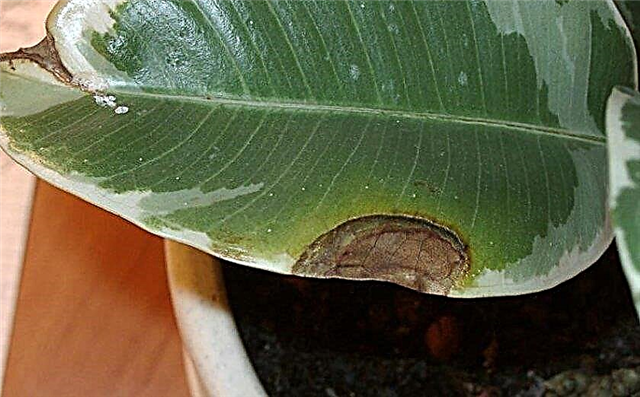
- Gray rot. It is a gray mold. If you shake the plant, then gray dust will rise. Affected areas should be removed and reduced watering.

- Soot fungus. It appears in the form of a grayish coating on leaf plates. In this case, the leaves are washed with soapy water, and the strongly affected ones are removed.
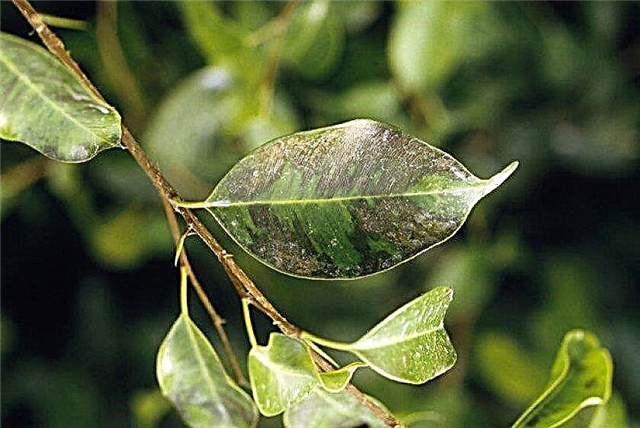
- Root rot. In this case, the ficus gradually disappears, acquiring a nondescript appearance. Unfortunately, when this problem occurs, the plant will most likely have to be disposed of. If the root system is not completely affected, then you can try to resuscitate - transplant into another soil and remove all diseased parts.
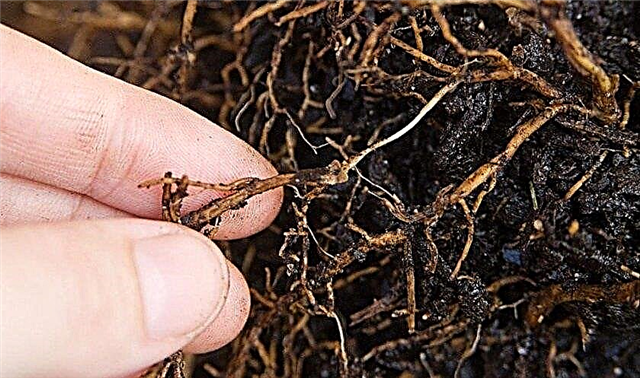
Ficus can be attacked by the following pests:
- Mealybug. Reaches a length of 12 mm, so it can be easily noticed. Stickiness appears on the leaves and white, similar to cotton wool, plaque. Leaves are deformed and turn yellow. To eliminate this problem, the plant is cleaned with soapy water and the “Aktara” insecticide is used. Be sure to replace the soil in the pot.
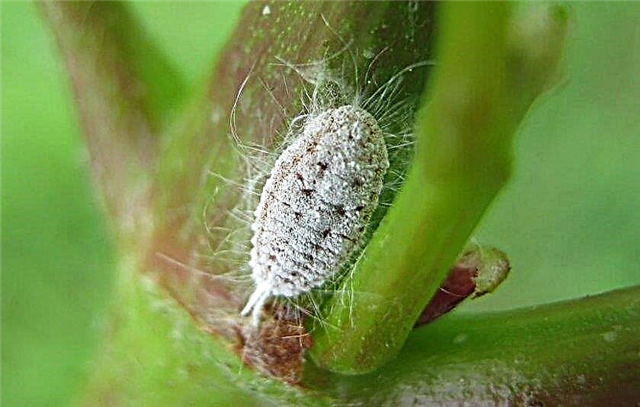
- Shield. You can identify the pest by the presence of brown plaques and the appearance of a sticky coating on the foliage. In this case, the affected areas should be washed with soapy water and then treated with the “Actellik” chemical preparation.
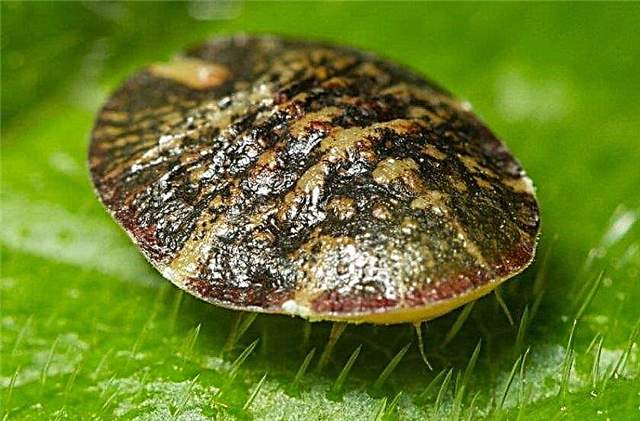
- Spider mite. It is detected by white spots and a thin cobweb on the leaves. To combat such a pest, you need to increase the humidity and apply the chemical agent “Aktara” or “Sunmayt”.

Ficus Benjamin Starlight is a spectacular variegated plant that will decorate any room. He needs to ensure the right microclimate, and then there will be no problems with him, since caring for him is completely uncomplicated.








